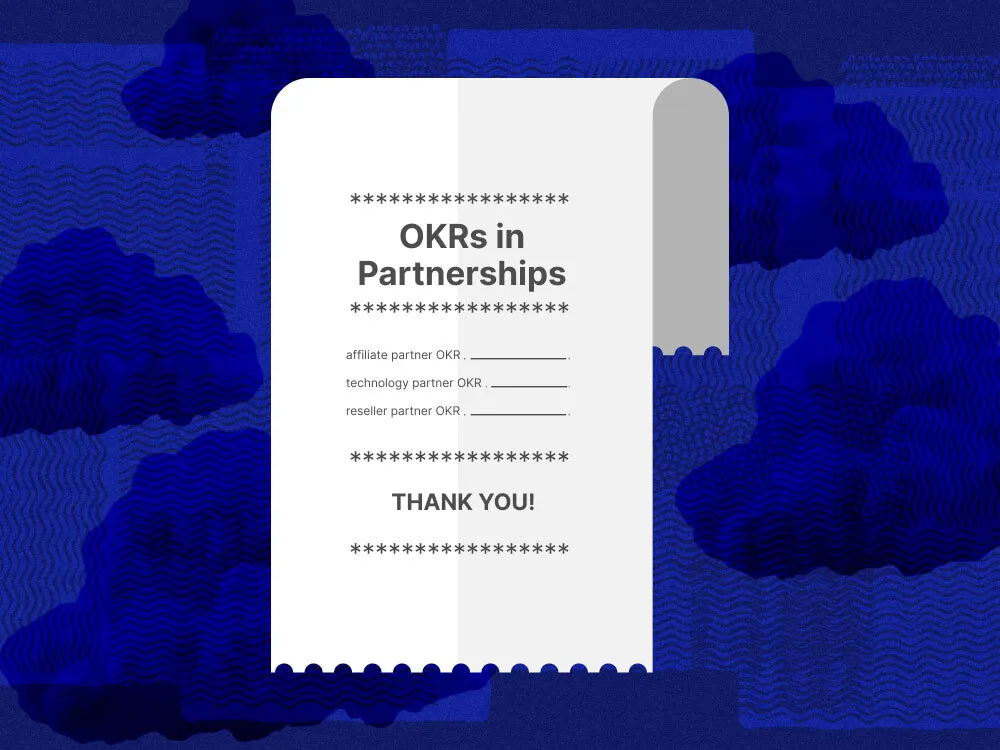Anyone who has worked in SaaS can speak to lengthy planning sessions that happen at pivotal times of year. You know, the ones gearing up for the crucial annual planning season. SaaS leaders crunch up numbers, evaluate what's working, dissect how the past year fared and the current year's status to set goals for the future.
Introduction to OKRs in SaaS
Now, there’s a term for it — OKRs, which stands for objectives and key results. The impact of incorporating OKRs into SaaS business strategies is undeniable. They bring alignment, transparency, and laser-like focus to your goals. Data Intelligence AI reports that teams consistently using OKR improved their overall performance by 15.5 per cent.
OKRs represent a collaborative goal-setting approach both teams and individuals use to set ambitious goals accompanied by measurable outcomes. They help track progress, foster alignment and promote engagement around tangible outcomes.
But not all departments find it a walk in the park to set these OKRs. Take partnerships, for instance. They juggle between different roles and make things happen across teams. And since the partnership scene is still finding its groove, setting realistic goals can be a puzzle.
So, in this guide to OKRs for partnerships, we'll cover:
- What are OKRs?
- How do you set OKRs?
- Various partnership types and business levels
To start, let’s break down the different components of OKR.
Objectives
Objectives are the ambitious, qualitative goals that define a SaaS business or individual department’s direction. They answer the question, "What are we trying to achieve?".
Key results
Key results are specific, quantitative and time-bound measures that track progress towards achieving the objectives. They provide a measurable way to determine success and answer the question, "How will we know we've succeeded?".
Projects
Projects are targeted efforts or outputs strategically designed to help achieve OKR implementation strategies.
See more: Partner program strategies: How to optimize in two hours.
Understanding OKRs vs. KPIs
If your SaaS objectives (OKRs) aren't pushing for growth, new ideas, or change, it might be because they're not ambitious enough, or you're just keeping tabs on day-to-day tasks. OKRs should spotlight the big, important things over a longer time, while KPIs (key performance indicators) track things on a more granular level.
Let’s see their differentiation for further clarification.

Fundamentals of OKRs in B2B SaaS
Purpose
Aim to set ambitious goals that drive growth, innovation, and positive change. They focus on what you want to achieve and inspire teams to reach for higher aspirations.
Example: Increase user engagement by 20 per cent or launch three new product features.
Timeframe
Typically set for a specific period, such as a quarter or a year, to drive strategic initiatives over a defined timeframe.
Example: Achieve a 15 per cent revenue growth by the fiscal year's end.
Flexibility
Encourage adaptability and may change over time to reflect evolving priorities and strategies.
Example: Adjust OKRs quarterly based on performance reviews and changing business dynamics.
Related: How partners help enable the GTM motions you need for 2024.
Fundamentals of KPIs in B2B SaaS
Purpose
Focus on measuring ongoing performance and specific metrics that reflect the day-to-day health of a business.
Example: Monitor monthly revenue, track website traffic, and measure customer acquisition costs.
Timeframes
Monitored regularly, often on a daily, weekly or monthly basis, to gauge immediate and ongoing performance.
Example: Daily monitoring of website conversion rates.
Flexibility
Generally remain more stable, reflecting consistent focus areas for ongoing performance assessment.
Example: Regularly track customer satisfaction scores as a stable performance indicator.
Strategies for implementing OKRs in SaaS
Setting OKRs involves a structured approach to defining aspirational goals and measurable outcomes. Here's a step-by-step guide with examples to illustrate each stage.
Define clear objectives
First, clearly articulate the high-level, inspirational goal you want to achieve. This objective must align with your SaaS business’s broader mission and vision. For example, the objective could be to enhance customer satisfaction or drive innovation in product development.
Set key results
Identify specific, measurable outcomes that indicate progress toward achieving the defined objective. These key results provide clarity on what success looks like. Let’s take a look at what those key results could look like for the examples above.
Enhance customer satisfaction:
- Key result 1: Increase Net Promoter Score (NPS) by 20 per cent
- Key result 2: Reduce customer support response time to less than 24 hours
Drive innovation in product development:
- Key result 1: Launch two new product features by the end of the quarter
- Key result 2: Increase user engagement by 25 per cent by introducing innovative features
Ensure alignment
Team members should see a clear connection between their work and the overarching goals of their SaaS organization. The effort should be unified toward shared goals. An OKR that creates alignment among teams might be to develop marketing campaigns to support the launch of new product features. For an individual, it could be to attend a professional development course to improve skills in innovative product design related related to their software.
See more: Partner program KPIs you should measure and optimize.
Limit the number of OKRs
Focus on a manageable number of objectives and key results. Too many OKRs can dilute focus and effectiveness. Aim for two to three objectives with three to five key results each for a manageable and impactful OKR set.
Regularly review and update
OKRs are dynamic, and you should review them every quarter. Adjust key results if necessary and celebrate achievements.
Incorporate feedback
Encourage open communication to address challenges and refine objectives based on lessons learned. Collect feedback from customer support teams and customers to refine key results and improve satisfaction metrics.

See more: How OKRs for partnerships create impact, alignment and transparency.
Real-world examples of SaaS OKRs
Whether you're starting with a small business, growing in a medium-sized one, or part of a big company, your strategy should align how team members across the business work together.
OKRs for startups
Objective:
- Increase brand awareness and market share.
Key Results:
- Organize joint webinars with partner accelerators, aiming for a 30 per cent increase in attendance each time.
- Secure earned marketing coverage in at least two industry publications through unique collaborations, enhancing brand visibility.
OKRs for SMBs
Objective:
- Expand customer base and increase market resilience.
Key Results:
- Launch a co-branded content series with affiliate partners, aiming for a 25 per cent increase in engagement and social media shares.
- Secure 300 positive reviews from customers referred by partners, aiming for a 15 per cent increase in positive sentiments online.
OKRs for enterprise businesses
Objective:
Increase partnerships with other enterprise-level organizations.
Key Results:
- Develop and launch a co-branded product with a significant partner, targeting a 30 per cent boost in joint product sales.
- Host a joint innovation summit with partner enterprises, aiming for 1000 new leads generated.



















